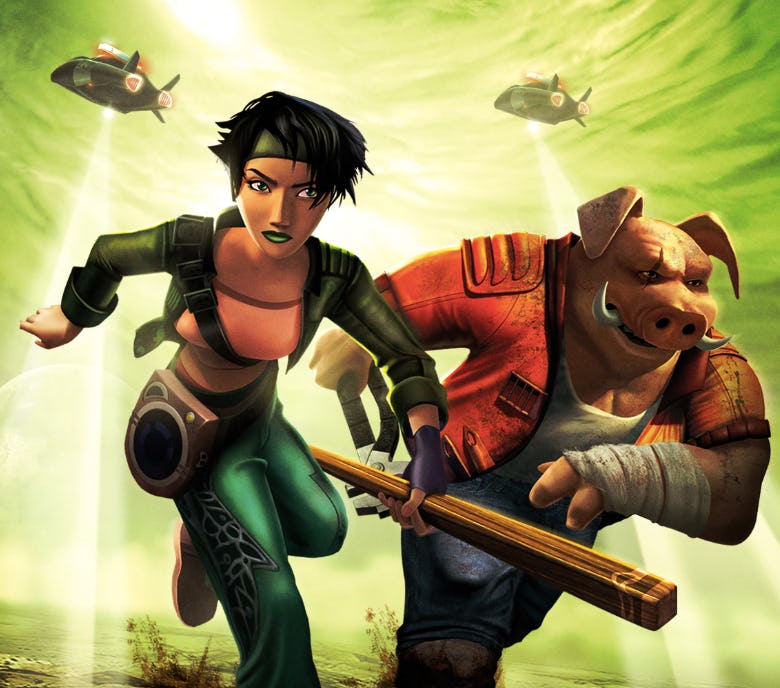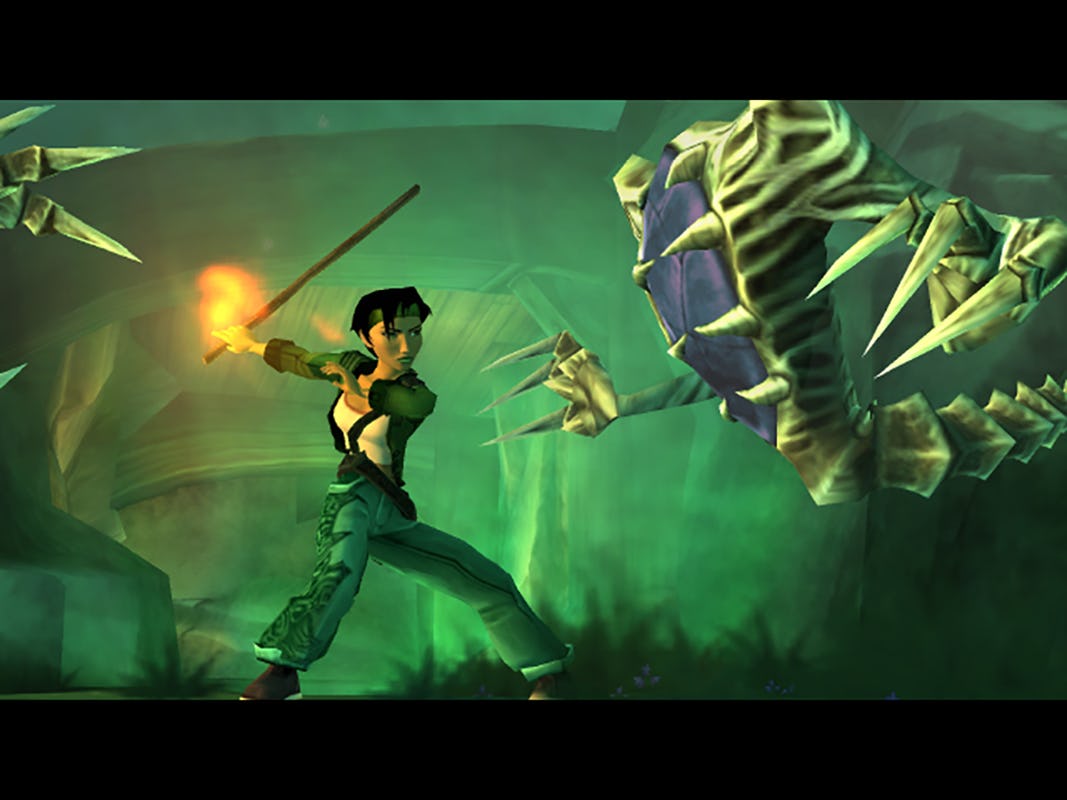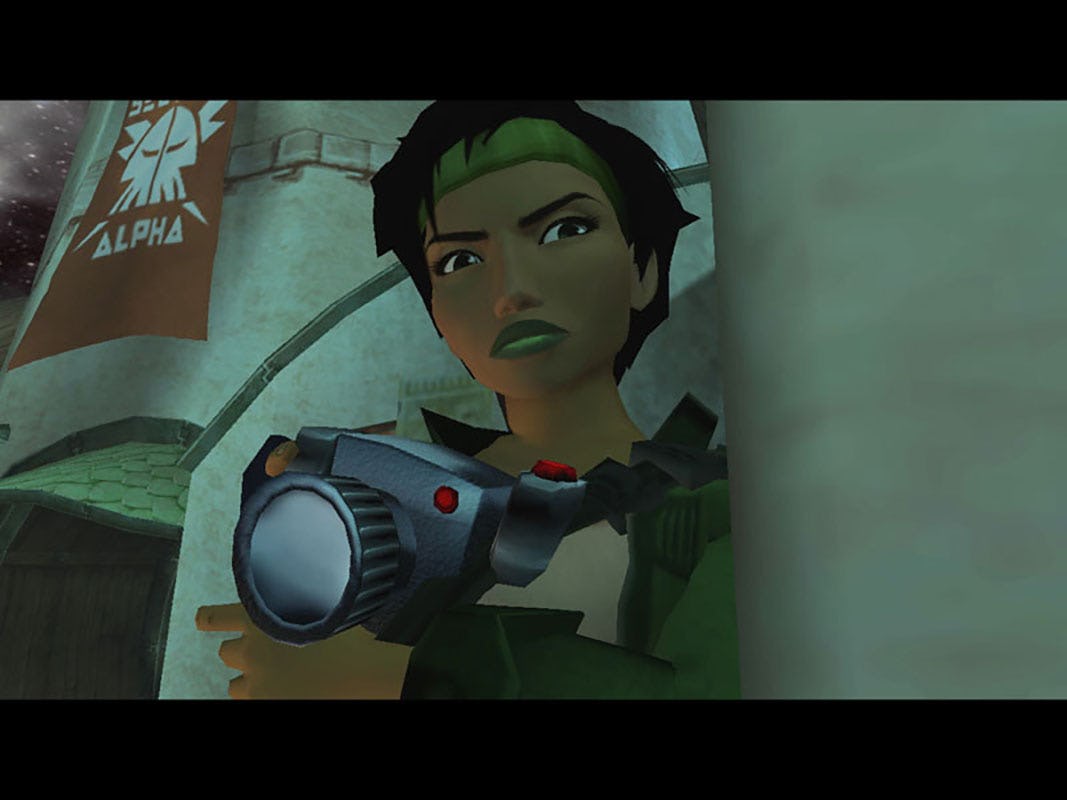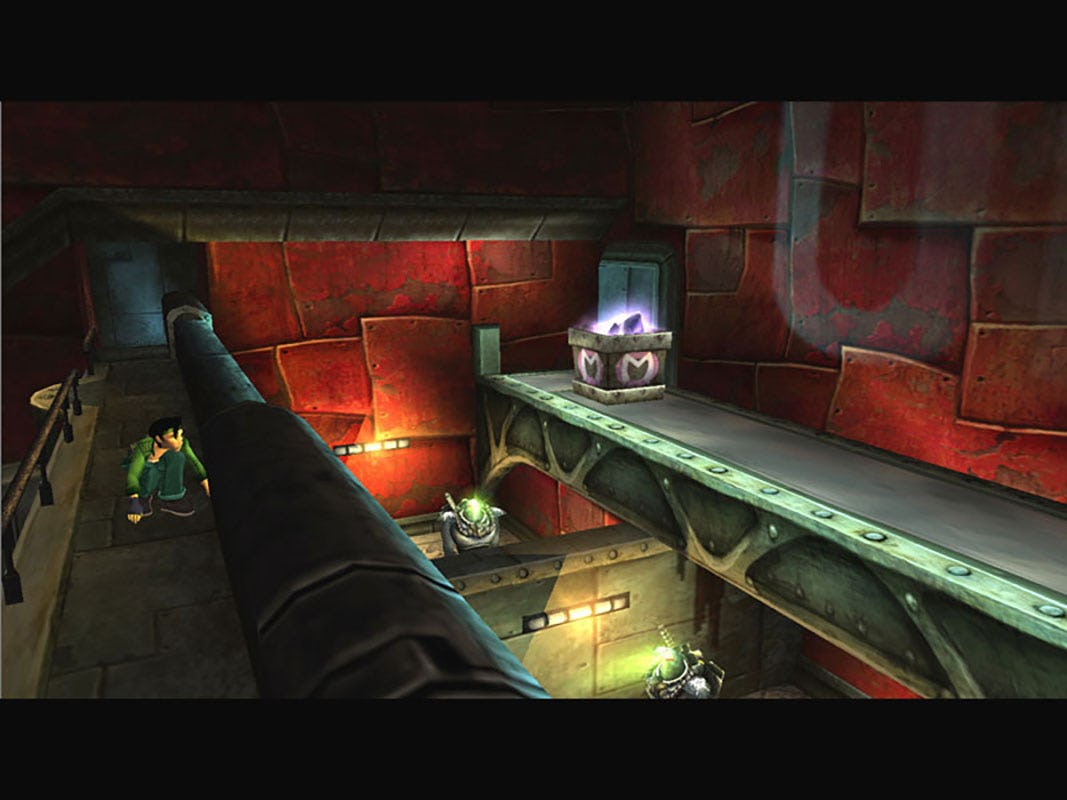
I still recall the first time I set eyes on Jade. I was hanging out in my older cousin’s basement, and he gave me his copy of a new video game. Her image dominated its brutalist box art. Before too long, I was hooked on Jade’s kick-ass charisma and the futuristic dystopia she inhabited, designed like an ageless Venice. I marveled at Jade’s green lipstick and her martial arts prowess. She was everything I wanted to be in a world I could only dream of exploring.
Beyond Good & Evil launched on November 11, 2003, with a great deal going for it. The game combined capable combat with a story that captivated players. It had a “Strong Female Lead” before Netflix would ram the pseudo-genre down our throats and reduce it to a punch line.
But while the future seemed bright, Beyond Good & Evil would go on to get bogged down in one of the gaming industry’s saddest stories of development hell. Here’s how the franchise-to-be buckled under the pressure of its own expectations — and why the original is still worth playing 20 years later.

Beyond Good & Evil puts you in the shoes of Jade, a photojournalist who lives in an idyllic lighthouse by the water with her uncle Pey’j (who happens to be a bipedal talking boar) and some children left orphaned by the DomZ (aliens who have laid siege to the area). After a particularly brutal DomZ attack, Jade is recruited to fight back against the aliens. This leads to the stealth, photo-snapping, and combat combination that comprises the gameplay. Beyond Good & Evil is filled with intrigue, presenting a story dripping with twists and high stakes. It also, notably, ends on a cliffhanger — one fans will likely never see resolved.
Today, I still feel echoes of Beyond Good & Evil. Beyond its photography elements (which I still delight in as I take care to meticulously frame every image in Breath of the Wild and Marvel’s Spider-Man when asked), I can’t help but think of Jade’s ability to go in swinging and know when to hang back, stealthing through areas unseen. The Assassin’s Creed franchise, especially the later entries, is a clear example, but so too are the Last of Us games, Ghost of Tsushima, Insomniac’s Spider-Man series, and even the Uncharted games. There are so many titles that combine frenzied combat and stealth today it’s easy to overlook the gameplay style. But in 2003, it felt revolutionary still.
This is true of Beyond Good & Evil’s universe. Emerald lip hues and kendo sticks aren’t enough to carry a game. The real delight of this gem was the story. Again, if you never played Beyond Good & Evil around its release and compare it to the modern landscape, it might not strike you as particularly noteworthy. But the dystopian setting was fascinating. In truth, it still is, even if its novelty has worn off a bit.
This formidable plot hinted at further ambitions for the universe, something creator Michel Ancel admitted to. In 2005, Ancel told Eurogamer he had larger story plans for the world introduced in Beyond Good & Evil and that a trilogy was, at one time, in development. Even the title, a nod to philosopher Friedrich Nietzsche’s work of the same name, felt like a clue to Ancel’s thoughts. But while Beyond Good & Evil stood out to critics, it didn’t sell well. Ubisoft put Ancel on other projects.

This could have been where the story ends. A disappointing but familiar tale of a game that didn’t get its credit in due time. A commercial failure players and critics look back on fondly. But 20 years after its release, that’s not how Beyond Good & Evil is remembered.
In 2008, when the title seemed all but forgotten save for the evangelists who still talked about how great the game was despite its low sales, Ubisoft seemed to regain interest. That year, the publisher announced a follow-up, with no release date or platform details, just a trailer featuring returning character Pey’j and maybe Jade sitting in the background. Still, it was enough to draw up excitement.
“I'm really excited to see BG&E make its return — it was a commercial flop, and it seemed for a while that the cliffhanger ending of the first would never be resolved,” Chris Kohler wrote for Wired at the time.

Very quickly, however, things took a turn. The sequel would include co-op in addition to single-player, but it needed an internet connection regardless of mode. It was a role-playing game. Players could choose between a male or female protagonist. It was inspired by 9/11. It was a sequel that would see characters “react on important events of the first [game],” as Ancel said in 2009. Then it became a prequel.
Beyond Good & Evil 2 was everything and it was nothing.
By 2016, Ancel confirmed he switched focus to Rayman Legends, though he and his team would eventually go back to working on the prequel. In 2017, Ubisoft again touted Beyond Good & Evil 2 at E3. But that same year, Ancel told The Verge that it was still, somehow, at “day zero of development.” Ancel left Ubisoft in September 2020, but even before then, Beyond Good & Evil 2 was firmly in “development hell.”
In 2022, Beyond Good & Evil 2 officially surpassed Duke Nukem Forever as the game with the longest development period. Earlier this year, creative director Emile Morel tragically passed away.

Beyond Good & Evil, once again, can’t seem to get its due. At release, the magic of the game was overlooked by its weak sales, dashing hopes for a continuation of the story that those who did pick up gripped. Ancel and the team had high hopes for a trilogy, that much was clear from the 2003 game. But those hopes and ambitions weighed down any possible follow-up rather than lifting it up.
The legacy of Beyond Good & Evil often feels sullied. It seems impossible for it to come out of its ever-upcoming prequel’s shadow, dwarfed by the absurdity of its never-ending development. But if we focus on what is rather than what isn’t, we can remember what was so great about Beyond Good & Evil in the first place and why so many clamored for another game in the first place. Many games don’t get the recognition they deserve the first time around, fewer get a second chance. But the disappointment shouldn’t outweigh the well-deserved recognition of a game that so many people fell in love with.
Beyond Good & Evil is often thought of through the lens of “what could have been.” What could it have been if Ubisoft took a chance on the planned trilogy earlier? If the sequel-turned-prequel-turned-nothing actually came to be?
But Beyond Good & Evil, the actual game released in 2003, isn’t a possibility. It exists. And it’s still playable, in fact. That game deserves our consideration more than what-ifs.







